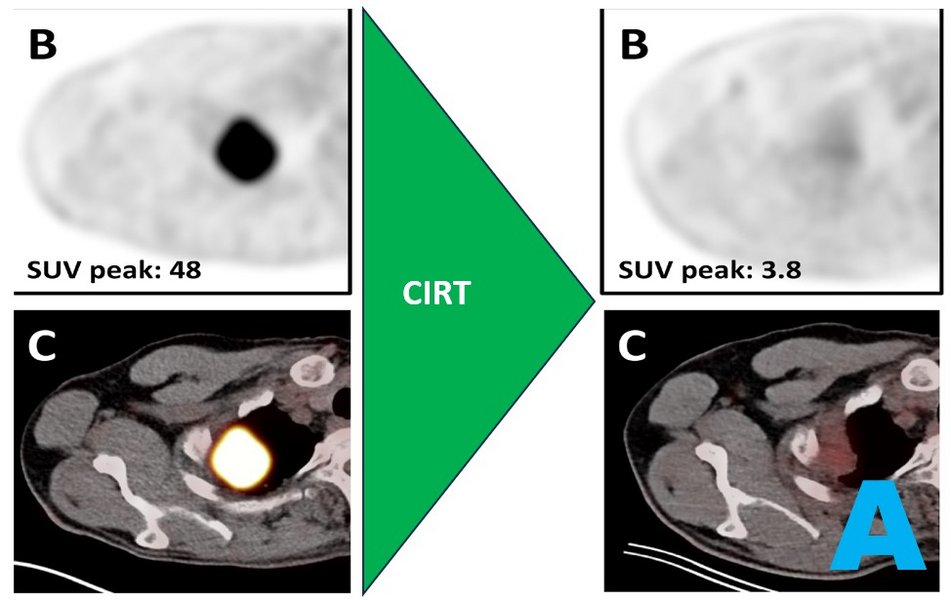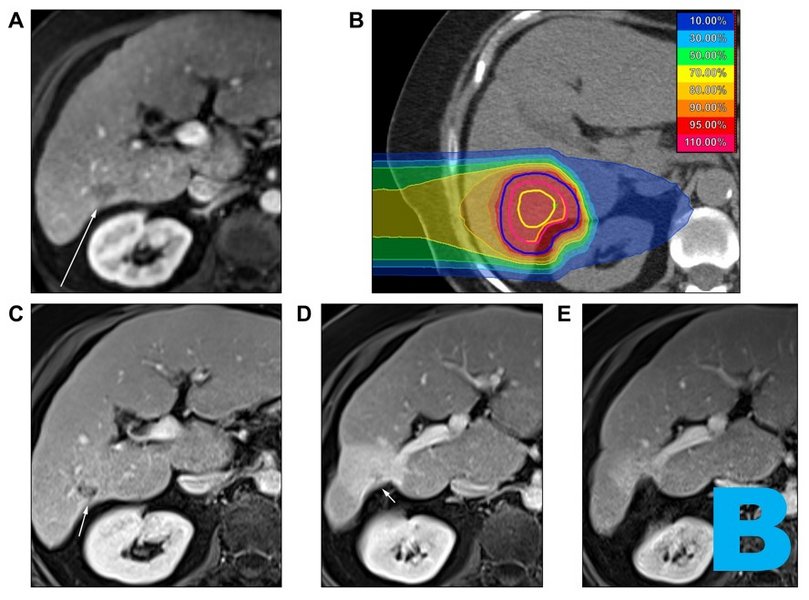News
Six successful studies on particle therapy with carbon ions and adaptive radiotherapy at the MR-Linac
Clinician scientists at the NCT Heidelberg, the Department of Radiation Oncology of the Heidelberg University Hospital (UKHD), the Heidelberg Ion Beam Therapy Center (HIT) and the German Cancer Research Center (DKFZ) have successfully completed six innovative clinical studies on carbon ion radiotherapy (CIRT) and adaptive MR-guided radiotherapy (MR-Linac). An MR-LINAC is a hybrid device for the precision tumor irradiation by a linear accelerator (LINAC) by simultaneous utilization of magnetic resonance imaging (MRI). This makes the tumor visible to the treating physicians in real time during irradiation, enabling them to treat it more precisely while sparing normal tissue.
In the area of sarcomas of the coccyx, Katharina Seidensaal and colleagues were able to show in a randomized phase II study (ISAC) that hypofractionation (treatment in only 16 sessions can be used to shorten therapy duration with both protons and carbon ions. Fabian Weykamp and his co-authors were able to demonstrate the feasibility of preoperative neoadjuvant radiochemotherapy with carbon ions in lung cancer with promising responses in the INKA study. In the PROMETHEUS study, the team led by Jakob Liermann showed that hepatocellular carcinomas (HCC, liver cancer) can be treated very successfully with carbon ions, with a local tumor control rate of 100 percent and very good tolerability. First author Philipp Hoegen-Saßmannshausen was awarded the German Society for Radiooncology's (DEGRO) High-Precision Radiotherapy Prize in 2023 for this groundbreaking study.
In the MARCIE study, Laila König's Neuro-Radiation Oncology team was able to demonstrate the high effectiveness of a CIRT boost in addition to standard photon irradiation for atypical meningiomas after subtotal resection. However, an increased risk of neurological side effects was observed in a subgroup of patients. The research group is pursuing strategies to better identify patients at risk for development of side effects, and to understand the underlying pathomechanisms.
Using a similar bimodal approach, in which a carbon ion boost concept is used in addition to intensity-modulated radiotherapy (IMRT), Katharina Weusthof and colleagues showed promising results in the treatment of paranasal sinus tumors in the phase II HIT-SNT study. Finally, Christoph Grott (née Fink) and colleagues were able to show in the phase II SMILE study that daily imaging at the MR-LINAC both before and during treatment (online) and daily adaptation of the treatment plans to the real-time anatomy can reduce the otherwise multi-week treatment of prostate cancer to just five sessions with very good tolerability.
Links to the publications:
Seidensaal et al. – DOI: 10.1016/j.radonc.2024.110418
Weykamp et al. – DOI: 10.1016/j.adro.2024.101573
Hoegen-Saßmannshausen, …, Liermann – DOI: 10.1016/j.jhepr.2024.101063
Deng, …, König – DOI: 10.1093/neuonc/noad244
Weusthof et al. – DOI: 10.1016/j.ijrobp.2023.09.037
Fink (Grott) et al. – DOI: 10.1016/j.ctro.2024.100771 und DOI: 10.3389/fonc.2024.1308406
Image descriptions:
A
Images from INKA. Before (left) the carbon ion radiation therapy (CIRT), lung cancer is visible. After (right) neoadjuvant radiochemotherapy with CIRT, a complete remission is evident.
B
Images from PROMETHEUS. Patient with complete remission after CIRT. (A) before CIRT, (B) CIRT plan, (C) (D) (E) 1, 9 and 24 months after CIRT.









